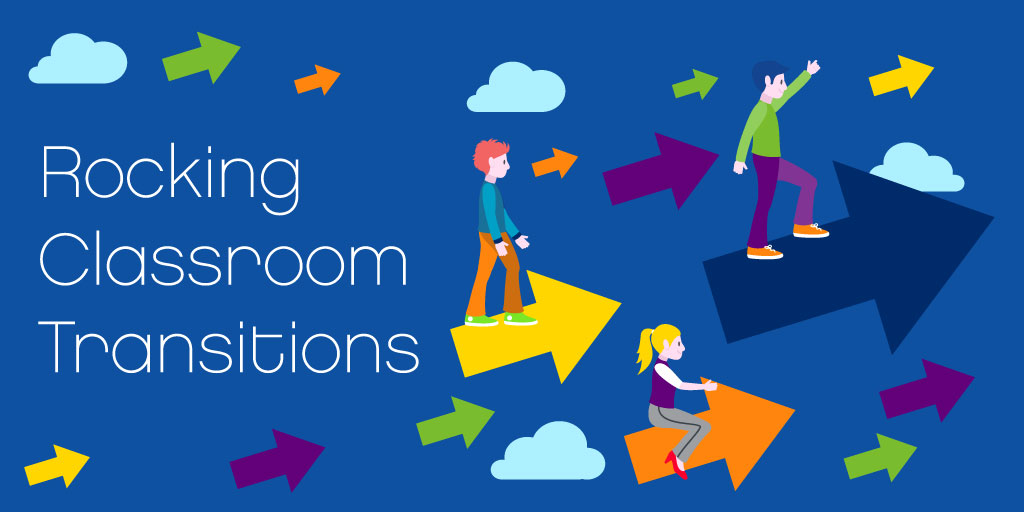
It’s that time again—time to move on to the next activity or learning opportunity. It is time to transition! These can be stressful times in a classroom, when disruptions increase and learning decreases. Transitions are a natural part of any classroom, so how can teachers capitalize on the opportunity to smoothly move on to the next activity and maybe learn something at the same time?
Before we list some ideas of how we can rock our transitions to make the most out of them, let us first make sure we are all speaking the same language when it comes to a “transition.” A classroom transition is any shift from one activity to another. This could be from one instructional task to another—from whole-group to independent practice for example, or from one center to the next. It could also be a transition into or out of learning. This could be how the students enter the classroom at the start of the day or how they exit out of the learning on the way to lunch. There are numerous transitions in an elementary classroom, but in every classroom, there are a few during each period of learning. Every class starts and ends with a transition, and there are almost always a few in between.
Transition Tips
As you can see, there are a lot of transitions that happen throughout the school day and school year. In order to make the most of our learning, here are a few tips to help make transitions as good as they can be:
- Make sure there are expectations: Great teachers know to do this naturally, but it needs to be stated explicitly at the start: Good transitions require training and practice. Students need to know how to operate during the transition, whether that be how to turn a paper in, how to disconnect technology, or how to line up. The time to go over these skills is not in the middle of the transition, but before it. The teacher should demonstrate the skills and make it visible for the students.
- Practice makes perfect: Even though it sounds funny, the transitions need to be practiced. If we are going to clean up and line up, have the students model how to do this first during a time when it is not actually a transition. This helps all the students to understand what is expected. It can also allow the teacher to give feedback and answer questions when it isn’t a hurried time. The moment when the bell is about to ring is a bad time to have to cover the expectations, so teachers should practice at another time when there is plenty of time to retry if needed.
- Try to provide feedback: Sometimes when students transition, the teacher has to transition as well. The teacher is likely to be distracted by putting together the next set of materials or cleaning up from the last activity, but the teacher should provide feedback during the transition as much as possible—even going so far as to actually time the transition is a good idea. By putting a visual timer up on the Boxlight ultra-short throw projector, the teacher can set goals to improve as a class by becoming quicker and more efficient all the time.
- Add in some learning: I know a lot of elementary classrooms that will sing or play a song during a transition time. This is a great idea because it helps the students to monitor the time by getting things done before the song is over—and it gives them an extra dose of learning. Another great idea is to have the students provide feedback about the learning during the transition. At the end of the lesson, this could be an exit ticket on the way out the door. At the start of the lesson, this could be marking something on the ProColor touch display recalling something from the lesson from the day before.
And why does it matter so much, anyway? Aren’t we just nitpicking by acting as though a transition in the classroom is that big of a deal? If we stop to think about the average school year, we can see the impact much more clearly. Let’s say the school year is 180 days long. If we have a transition that takes two minutes longer than it should, that equates to six hours of learning of the course of the entire year. Those two minutes can really add up! Every transition doesn’t need to be a race or a contest to move quickly, but if we let them drag on and on, it can have a negative impact on the learning experiences for our students.
With a few simple tips and tweaks, every teacher can optimize learning and truly rock their transitions throughout the day!
Looking for more great teaching tips and inspiration to help you throughout the year? Be sure to subscribe to the Educator blog!



